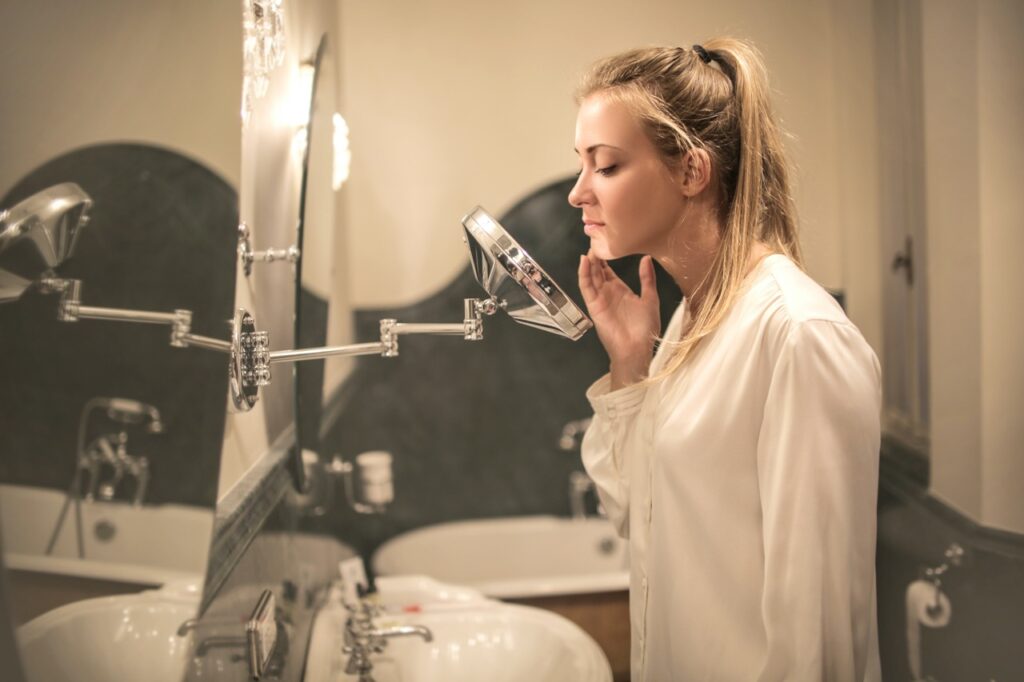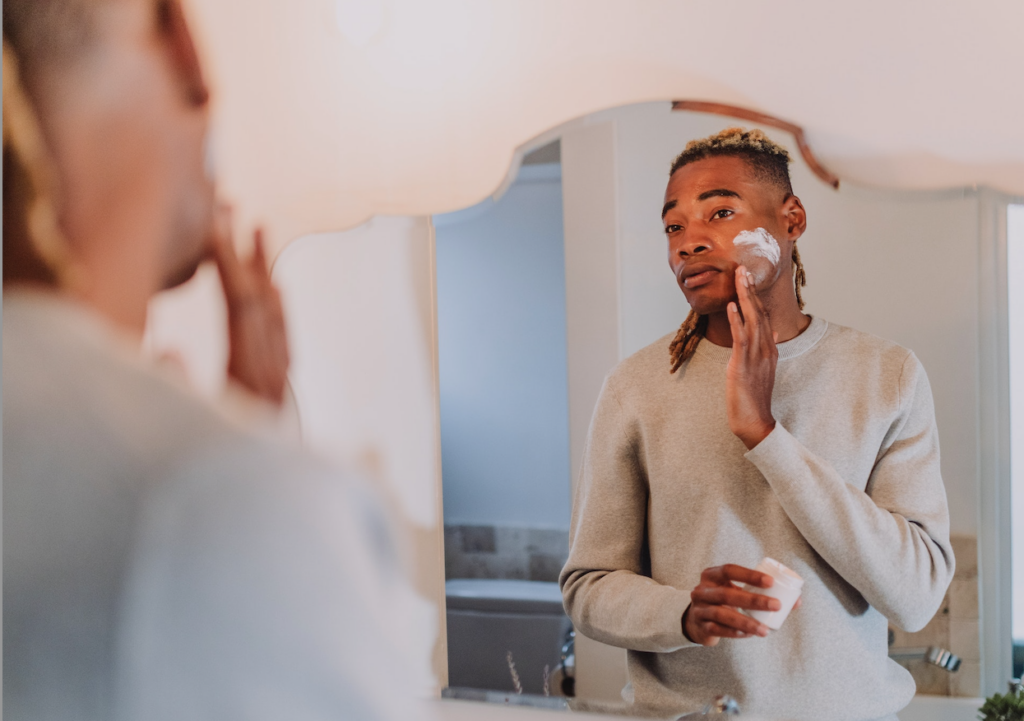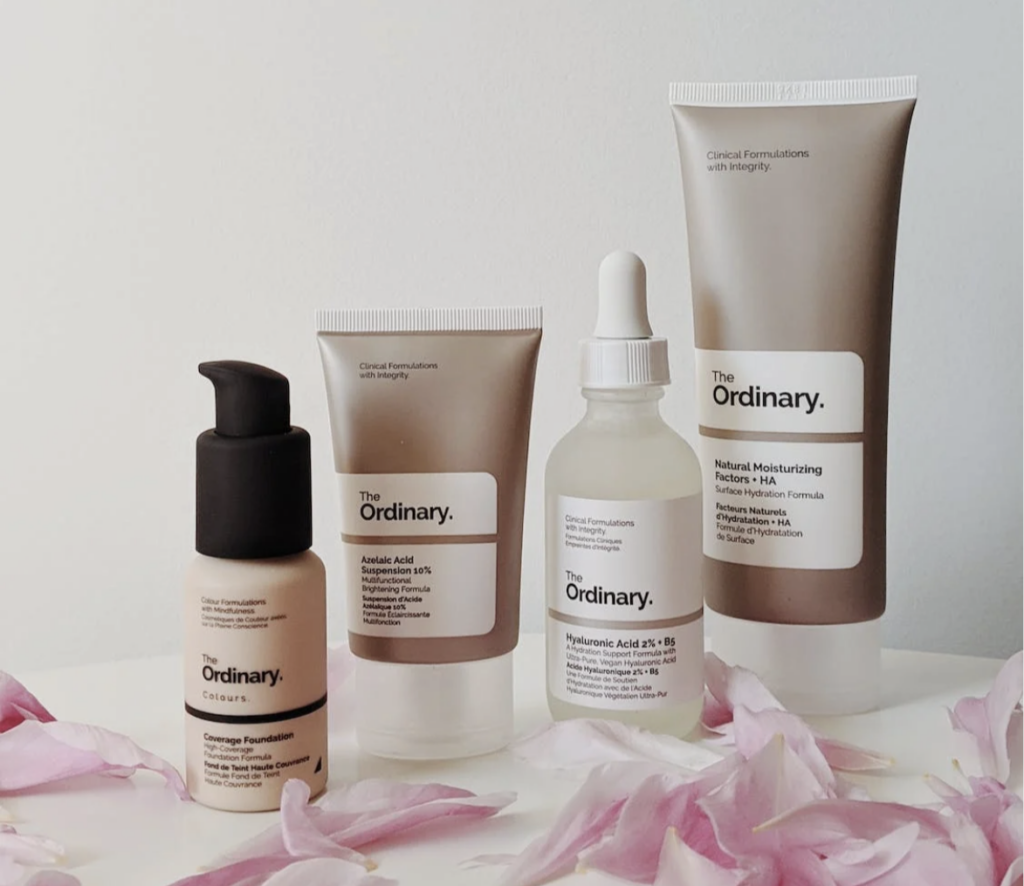Common Sense Practices Dispel Common Skincare Myths

When it comes to skincare, everybody from board-certified dermatologists to spas and clinics, to brand representatives, to retailers, to your best friend has something to say. Certainly, we all want to look fresh and glowing, and healthy, especially since skin appearance is one of our most noticeable features. But figuring out how to do that can be a challenge. Especially since recommendations are often contradictory and some advice is just plain damaging to your skin. To help sort out what’s right for you, let’s look at several common skincare myths, along with reasonable recommendations for what you should be doing instead.
Myth: The right skincare routine prevents aging.
Reality: The first step in planning skincare is realizing there is no “right” routine that applies to everybody. Second, aging happens no matter what, although it is possible to maintain a vibrant appearance when a proper diet, healthy lifestyle, and favorable genetics accompany careful skincare.
Finding the right skincare is actually a very individualized project since everyone’s circumstances are different. Knowing your skin type (dry, oily, normal, or combination) matters. This will factor things like age, race, family heritage, occupation, climate, and season influence the types of products you’ll want to use. Finding your routine is largely a matter of trial and error. Some products are too potent for your skin, some don’t deliver desired results, and others you just don’t like. Experimenting with brands, amounts, frequency, strength, and tolerance is also a good idea; your skin often needs time to adjust to change.
As for aging, it’s not something any of us can stop, but we do want to approach it gracefully. That’s where personal care comes in. A balanced diet with lots of water, fruits, and vegetables and limited processed food, sugar, and refined carbs contributes to healthy-looking skin. So does smoking cessation; nothing wrinkles facial skin faster than sucking on a butt. Fresh air and exercise matter to skin health, as does attitude. Recognizing that aging eventually leads to changes for all of us is basic to accepting—and enjoying—where we are in life.
Myth: The best way to thoroughly clean skin is with hot water, strong soap, vigorous scrubbing, and frequent exfoliation.
Reality: Rough application of harsh cleansing products, especially when used with really hot water, is bad for your skin. The goal of washing is to remove makeup, take away dirt and grime, and cleanse off the excess oils skin naturally produces. But washing should never result in redness, roughness, dryness, irritation, stinging, or broken skin. These make you look dull and can lead to infection and breakouts.
When washing, using the hottest possible water seems to make sense. But overwashing and overexposure to steamy water strip away the moisture and natural oils your skin needs. Long, bubble-filled soaks do the same thing. Limiting showers to 10 minutes and using lukewarm water is the best advice of skincare experts, who also recommend patting skin dry rather than rubbing briskly. And unless you’re exercising heavily or involved in a profession that calls for frequent cleansing, showering every other day is enough.
Be gentle with scrubbing and choose soaps and cleansers carefully. This is actually a surprisingly complicated topic. With hundreds of choices available, most containing an array of chemicals, synthetics, fragrances, and multiple other substances with names too complicated to pronounce. Understanding which elements, in what quantities, is in a particular product is key to knowing how it affects you. Avoiding alcohol, fragrances, lathering agents, and antibacterial/antifungal preservatives also matters. Irritants are often hidden in cleaners and soaps.
Exfoliation is a particularly intense form of deep cleansing. It uses physical, chemical, or mechanical means to promote skin regeneration by removing dead skin cells and opening pores. Granular cleansers, acid and enzyme formulas, and microdermabrasion devices are all forms of exfoliation. Results vary widely, with some of us finding skin is brighter, firmer, and livelier after exfoliating. While others may end up with damage ranging from mild irritation to open sores. Most skincare experts recommend caution, limiting use to occasional, or avoiding exfoliation altogether. This is especially true for people with sensitive, aging, or easily damaged skin.

Another Common Skincare Myths: To be effective, skincare needs to be complicated and involve numerous products.
Reality: Most experts recommend just the opposite: Keep it simple. There are only three products everyone must be using—cleanser, moisturizer, and sunscreen. Cleanser is the foundation of every routine, removing dirt, makeup, dead skin, and excess oil. Type of cleanser—balm, foam, gel, lotion, soap—is up to you. Just make sure surface impurities are swept away, pores are cleaned out, and skin is hydrated upon use.
Moisturizer comes next and is best applied immediately after washing or showering while skin is still damp. Product consistency depends on skin type, with oilier skin often preferring a gel while dry skin likes a thicker cream. And yes, even people with oily skin should use moisturizer; it helps nourish while regulating sebum output. Once moisturizer is in place, you can safely layer on whatever astringents, essences, masks, serums, toners, and other substances you’ve added to your routine.
Be sure to apply sunscreen every morning, year-round, to screen out harmful UV rays. Even on cloudy days in the dead of winter, the sun’s UV rays are present. Causing everything from light sunburn to potentially deadly cancers to visible skin ageing. Choose a broad spectrum SPF30+ product and check for ingredients that might irritate your skin. Reapply sunscreen throughout the day when at the beach, on the ski slope or hiking trail, and whenever you’re outside for extended periods of time.
Myth: Expensive skincare products work better than moderately priced items.
Reality: Not necessarily. Effectiveness is governed by formulation rather than cost. There are many moderately priced items performing just as well as big-ticket counterparts. Substantial price tags often mean you’re paying for a premium brand name, fancy packaging, and splashy marketing campaign. Since most of us have budget limitations, learning product features and knowing how they interact with your skin type lets you select items that both benefit your skin and respect your wallet.
Myth: Eating chocolate and/or greasy foods causes acne.
Variation: Wearing makeup every day and not washing the face causes acne.
Reality: Multiple factors are involved in producing acne and other facial blemishes, but foods and makeup are not among them. Acne occurs when the subdermal sebaceous glands (we all have them) that produce sebum go hyperactive. Sebum is essential because it’s the oily substance that keeps skin from drying out. But too much sebum, often triggered by hormone fluctuations, traps impurities and clogs pores with dead skin cells and bacteria. That what leads to inflammation and acne breakouts. Lack of face washing doesn’t cause acne either, although it doesn’t help the situation and undermines overall cleanliness and health.

Myth: For best results, always follow the same skincare regime.
Reality: Change is a life constant that also applies to our skincare. While finding a routine that produces favorable results is a pleasure, making adjustments from time to time is to be expected as well. Activities, age, location, health and wellness, seasons, work and family all affect our lives, including the condition of our skin. If a routine or a product is no longer producing the results you want, start testing alternatives until you find something else that works.
After taking a look at these common skincare myths; above all, you want to realize that skincare is never a once-and-done endeavor. Taking a realistic, flexible, common-sense approach to nurturing our most prominent feature is central to how we look and feel as we go about our lives.
